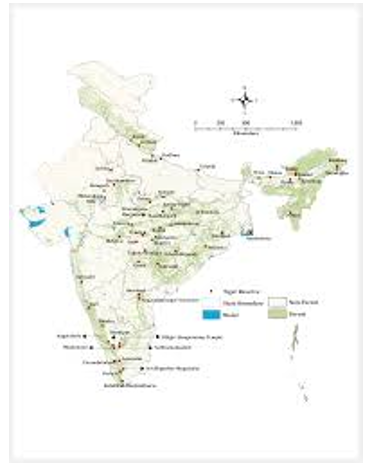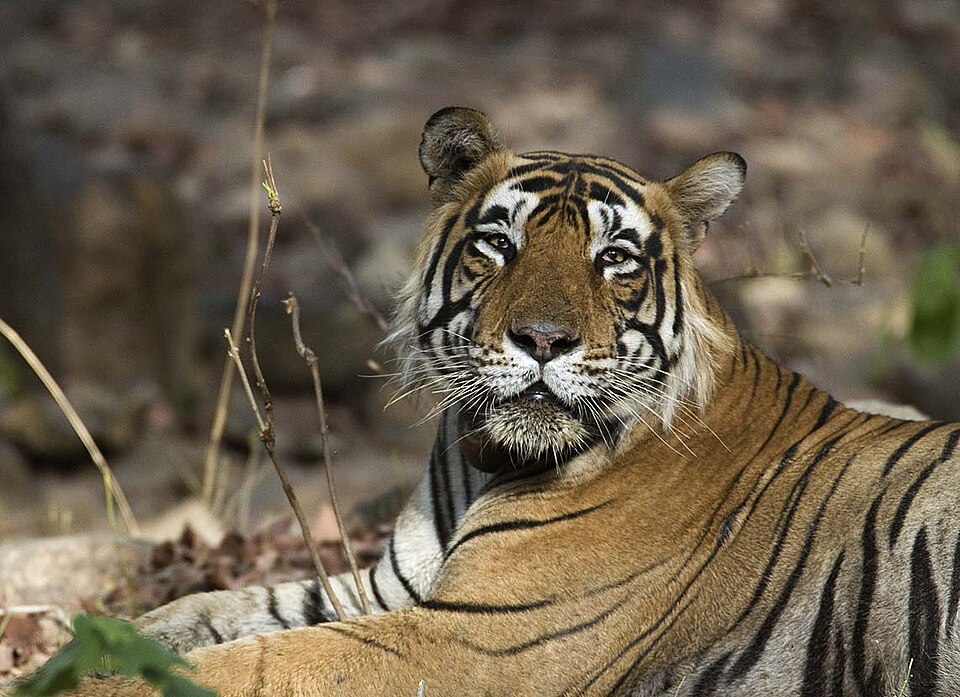Syllabus:
GS3: Conservation, environmental pollution and degradation, environmental impact assessment
Context:
The International Tiger Day is celebrated on July 29 every year.
More on the News
- The declaration to celebrate this day was made on July 29, 2010, in St. Petersburg, aiming to unite all tiger range countries in a concerted effort to enhance tiger conservation and management worldwide.
- Thirteen tiger-range countries united to address shrinking tiger numbers. They pledged to double wild tiger populations by 2022, a goal called Tx2.
- Theme: This year, the theme is “Securing the future of Tigers with Indigenous Peoples and Local Communities at the heart”.
- According to the World Wildlife Fund (WWF), approximately 100,000 tigers roamed the wild a century ago, while current estimates suggest there are only about 4,000 remaining today, and this number is decreasing.
Significance of the International Tiger Day
- This day serves as a platform to raise awareness about the challenges faced by these magnificent creatures and the efforts being made to safeguard their future.
- The protection of tigers signals a healthy ecosystem; hence, protecting them helps preserve biodiversity and ecological balance as apex predators and keystone species.
- This day brings nations together, highlighting tiger conservation as a shared global duty vital to our heritage, culture, and environment.
- International Tiger Day inspires action from all governments, groups, and individuals to support tiger conservation through advocacy, funding, or hands-on efforts.
Current Estimates of the Tiger
- According to the latest population estimate from the Global Tiger Forum, the current tiger population is about 5,574 wild tigers. The new number, which demonstrates a 74% increase since 2010.
- Over the past 12 years, tiger numbers have increased in Bhutan, China, India, Nepal, and Russia.
India:
- India has achieved remarkable success in tiger conservation, and it’s home to 3,682 large cats.
- India now supports the world’s largest tiger population. While holding only 18% of the world’s tiger habitat, and facing the highest human density among tiger-range countries, India accounts for 75% of the world’s wild tigers.

Conservation Efforts
Integrated Tiger Habitat Conservation Programme (ITHCP): Since 2014, IUCN, supported by the German Cooperation via KfW Development Bank, has invested €47.5 million across 33 projects in key tiger range countries, including Bhutan, India, Bangladesh, Nepal, Myanmar, Indonesia, and Thailand.
- This rights-based approach has placed communities at the centre of tiger conservation, ensuring their voices are heard, their livelihoods supported, and their leadership recognized.
India:

- The Royal Bengal Tiger is the national animal of India. Its survival is not a wildlife concern alone, but a national responsibility.
- Project Tiger (India): It was launched in 1973, this project has been instrumental in increasing tiger populations through the establishment of tiger reserves and stringent protection measures
- India boasts 53 designated tiger reserves, established to protect the country’s tiger population. These reserves are managed under Project Tiger, a conservation initiative launched in 1973.
- These tigers live across 138,200 sq km of forest, roughly half the size of the UK, often sharing the land with 60 million people.

